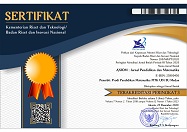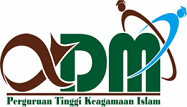ANALISIS KEMAMPUAN MATEMATIKA SISWA SMP SUMBA BARAT DAYA DALAM MENYELESAIKAN SOAL PISA
Abstract
Abstrak:
Gambaran kemampuan siswa dalam menyelesaikan soal PISA khusunya pada matematika sangat penting untuk dianalisis dan dievaluiasi karena mengukur kamampuan membaca, matematika dan sains pada anak usia 15 tahun. Penelitian ini dilakukan di sekolah menengah pertama yang ada di Kabupaten Sumba Barat Daya. Tujuan dari penelitian ini adalah untuk mengetahui kemampuan siswa di Kabupaten Sumba Barat Daya dalam menyelesaikan soal matematika tipe PISA. Penelitian ini merupakan penelitian kuantitatif menggunakan survei. Jenis data yang digunakan dalam penelitian ini adalah data primer. Hasil tes siswa sekolah menengah pertama di Kabupaten Sumba Barat Daya menunjukkan bahwa dari 611 siswa yang mengerjakan 6 soal PISA terdapat: (1) 0,16% siswa memiliki 6 jawaban benar, (2) 1,47% siswa memiliki 5 jawaban benar, (3) 9,17%siswa memiliki 4 jawaban benar, (4) 17,35% siswa memiliki 3 jawaban benar, (5) 24,55% siswa memiliki 2 jawaban benar, (6) 32,57% siswa memiliki 1 jawaban benar, dan (7) 14,73% siswa tidak memiliki jawaban benar.
Kata Kunci:
PISA, Sekolah Menengah Pertama, Sumba Barat Daya
Abstract:
The description of students’ ability to complete tests for the Programme for International Student Assessment (PISA), especially the mathematics test, is crucial to analyze and evaluate because the tests for PISA measure reading, math, and science of 15 years-old teenagers. This study was conducted in junior high schools in the Southwest Sumba regency. This study aims to determine students' ability in solving the math problems of PISA. This study follows a quantitative research method using a survey. The data used in this study comes from primary data. The results of students’ test in Southwest Sumba regency indicate that of 611 students who worked on 6 PISA tests, it was found that: (1) 0,16% of students answered 6 questions correctly, (2) 1,47% of students answered 5 questions correctly, (3) 9,17% of students answered 4 questions correctly, (4) 17,35% of students answered 3 questions correctly, (5) 24,55% of students answered 2 questions correctly, (6) 32,57% of students answered one question correctly, and (7) 14,73% of students answered all of the questions incorrectly.
Keywords:
PISA, Junior High School, Southwest SumbaFull Text:
PDF (Indonesian)References
Arikunto, S. (2002). Metodologi penelitian suatu penelitian proposal. Jakarta: PT. Rineka Cipta.
Balitbang Kemdikbud. (2011a). Survei internasional PISA. Diambil pada tanggal 28 Oktober 2020, dari http://litbang.kemdikbud.go.id/index.php/surveiinternasional-pisa/tentang-pisa.
Balitbang Kemdikbud. (2018). Laporan nasional PISA 2018 Indonesia. Diambil pada tanggal 15 Desember 2021, dari https://simpandata.kemdikbud.go.id/index.php/s/tLBwAm6zAGGbofK.
D., Jacobs, L. C., Sorensen, C. et al. (2010). Introduction to research in education (8th ed.). Belmont, CA: Wadsworth
Depdiknas. (2003). Undang-undang nomor 20 tahun 2003 tentang sistem pendidikan nasional. Sekretariat Negara. Jakarta
Heppel, S., Chapman, C., Millwood, R., Constable, M. & Furness, J. (2004). 21st century school: Learning environments of the future. London: CABE & RIBA.
Kuhlthau, C. C., Maniotes, L. K. & Caspari, A. K. (2007). Guided inquiry: Learning in the 21st century school. Westport, CT: Libraries Unlimited.
OECD. (2013). OECD Programme for International Student Assessment (PISA). Diakses 12 Juni 2021 https://www.oecd.org/pisa/test-2012/form/
OECD. (2013). PISA 2012 Assesment and Analytical Framework: Mathematics, Reading, Science, Problem Solving and Financial Literacy. Paris: OECD Publishing.
OECD. (2014b). PISA 2012 technical report. Paris: OECD Publishing.
Pusztai, G & Bacskai, K. (2015). Parochial schools and pisa effectiveness in three central european countries. Social Analysis, 5(2), 145-161.
Saenz, C. (2008). The role of contextual, conceptual and procedural knowledge in activating mathematical competencies (PISA). Education Student Mathematics, 7(1), 123-143.
Sari & Dwi Cahya. (2017) Kemampuan siswa SMP di eks karesidenan Kediri dalam menyelesaikan soal-soal matematika model PISA dan TIMSS. Tesis magister, tidak diterbitkan, Universitas Negeri Yogyakarta, Yogyakarta.
Shiel, G., Perkins, R., Close, S., & Oldham, E. (2007). PISA mathematics: A teacher's guide. Ireland: Department of Education and Science.
Shute, V. J. & Becker, B. J. (2010). Prelude: Assessment for the 21st century. Dalam V. J. Shute & B. J. Becker (Eds.), Innovative Assessment for the 21st Century (pp. 1-12). New York, NY: Springer Science+Business Media, LLC.
Wu, M. (2010). Comparing the similarities and differences op PISA 2003 and TIMSS, OECD Education Working papers, 32, OECD Publishing.
Wulandari, I. C., Turmudi & Hasanah, A. (2015). Studi cross-sectional tingkat kemampuan literasi matematis siswa sekolah menengah pertama di Bandung berdasarkan pengujian soal PISA. Jurnal Lingkar Widyaiswara, 2(1) ,10-25.
Zulkardi. (2015). PISA’s influence on thought and action in mathematics education. Dalam Stacey, K. & Turner, R. (Eds.). Assessing Mathematical Literacy (286-290). New York, NY: Springer International Publishing Switzerland.
DOI: http://dx.doi.org/10.30821/axiom.v10i2.10309
Refbacks
- There are currently no refbacks.
Copyright (c) 2021 Samuel Rex Mulyadi Making, Yulius Keremata Lede

This work is licensed under a Creative Commons Attribution-ShareAlike 4.0 International License.
p-ISSN: 2087-8249 | e-ISSN: 2580-0450
Indexed by:
AXIOM : Jurnal Pendidikan dan Matematika is licensed under a Creative Commons Attribution-ShareAlike 4.0 International License.











